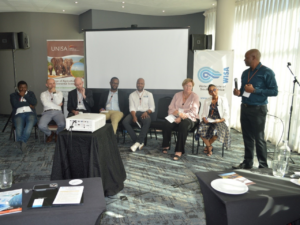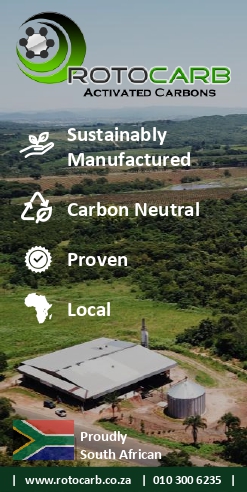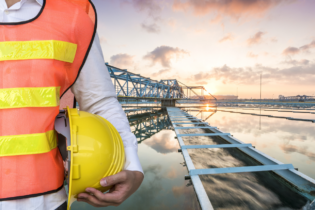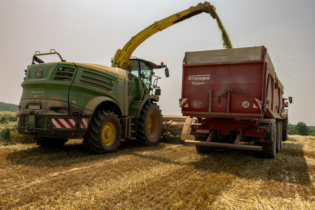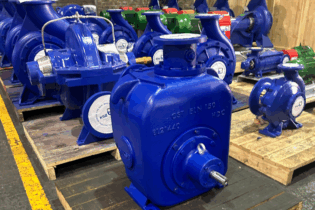Guest speakers from the Department of Water and Sanitation, Johannesburg Water, the CSIR, and the Auditor General of South Africa discussed challenges and opportunities within the wastewater reuse and recover sector.
Their presentations reflected on the status of wastewater management in South Africa and the importance of building wastewater resilience. Case studies on wastewater recycling and reuse were presented by Sasol, Veolia and eThekwini Metropolitan Municipality. Another highlight was a presentation by Professor Magne Sydnes of the University of Bergen as he showed stimulating research on the possibility of utilising photodecomposition to reduce pharmaceuticals in wastewater.Innovation in wastewater management
The seminar celebrated innovators in wastewater management. These pioneers, all proudly South African, presented technologies for sustainable reclamation and recovery of waste streams. Here is a summary of each innovator’s technology and its application:Green UltraPureTM Hydrogen Peroxide generation
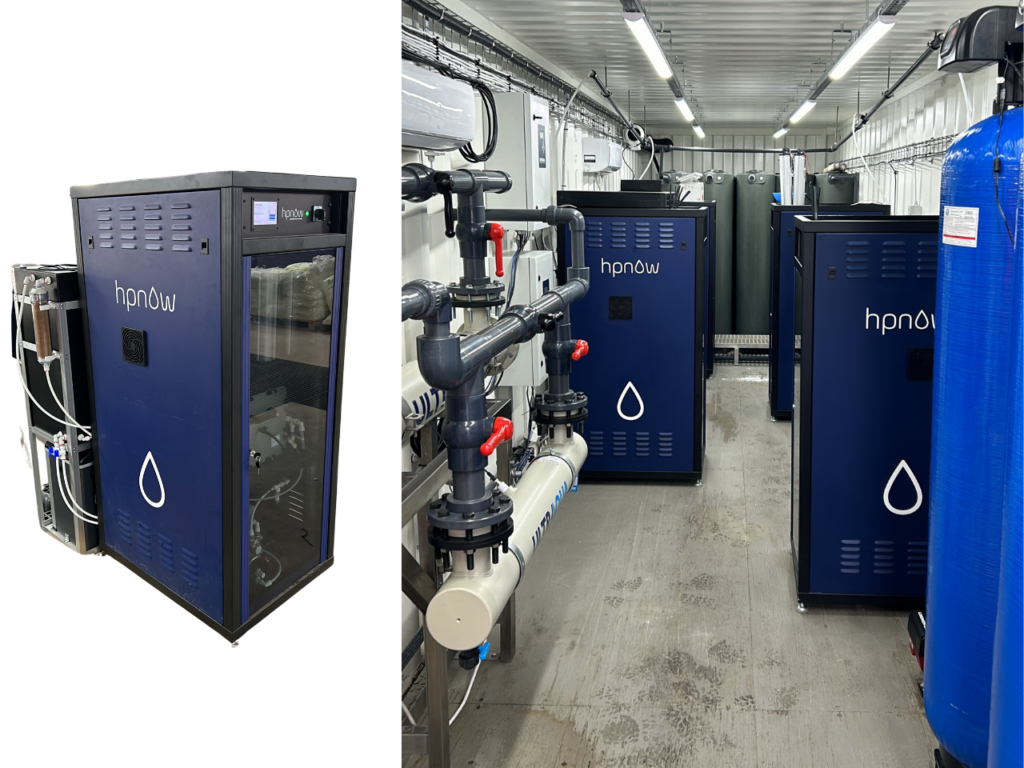 MatiTech Solutions is a South African company specialising in onsite Green UltraPureTM Hydrogen Peroxide generation, utilising only water and electricity as inputs to replace conventional oxidation chemistry.
Their UltraPureTM Hydrogen Peroxide decomposes into oxygen and water after an oxidation reaction, leaving no harmful byproducts. When powered by renewable energy, this green solution achieves a carbon-neutral footprint. By combining Ultraviolet (UV) disinfection, the process delivers a sustainable and environmentally friendly Advanced Oxidation Process (AOP). The AOP generates hydroxyl radicals (OH), which break down a wide range of water contaminants including but not limited to:
MatiTech Solutions is a South African company specialising in onsite Green UltraPureTM Hydrogen Peroxide generation, utilising only water and electricity as inputs to replace conventional oxidation chemistry.
Their UltraPureTM Hydrogen Peroxide decomposes into oxygen and water after an oxidation reaction, leaving no harmful byproducts. When powered by renewable energy, this green solution achieves a carbon-neutral footprint. By combining Ultraviolet (UV) disinfection, the process delivers a sustainable and environmentally friendly Advanced Oxidation Process (AOP). The AOP generates hydroxyl radicals (OH), which break down a wide range of water contaminants including but not limited to:
Organic Pollutants:
- Pharmaceuticals and Personal Care Products (PPCP’s)
- Pesticides and Herbicides
- Industrial Chemicals
- Volatile Organic Compounds
Inorganic Pollutants
- Ammonia
- Nitrate
- Microbial Contaminants:
- Bacteria
- Viruses
- Protozoa and parasites
- Fungi
Endocrine Disrupting Compounds
- Bisphenol A.
- Phthalates
- Nonylphenol and Octylphenol
Advanced anaerobic digestion – thermal hydrolysis process
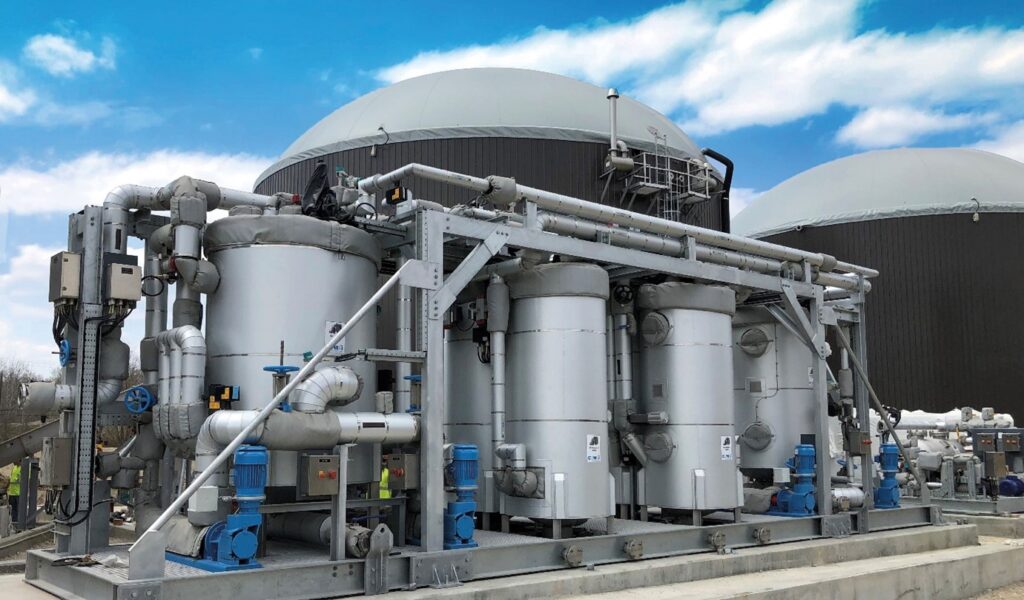 Advanced anaerobic digestion has emerged over recent time as a proven solution to shift from linear disposal practice towards circular economy practices.
Advanced anaerobic digestion has emerged over recent time as a proven solution to shift from linear disposal practice towards circular economy practices.The Thermal Hydrolysis Process (THP) is the industry leader in the range of advanced anaerobic digestion applications due to its robust and all-round performance in effectively converting a range of organic material feedstock. In comparison to other approaches, THP has been found to reduce anaerobic mesophilic digestion retention times while increasing biogas production and improving dewaterability of digestate while eliminating pathogenic content.
THP assists in delivering a Class A1 complaint sludge according to the microbiological and stability criteria of the South African sludge guidelines. This has recently been re-confirmed in studies conducted in India, including THP’s effectiveness in converting waste activated sludge (WAS) to an effective digestible feedstock. THP is applicable in both greenfield applications where significant digester build savings are typical or in brownfield upgrades where existing digesters present additional treatment capacity once integrated with THP, introducing regionalisation of sludge handling and the ability to then co-digest, allowing for the diversion of organics from landfilling. Carbon footprint reduction is achieved and the possibilities to enter carbon credit trading are made possible. For more information, please contact: Gary Brown, Dikubu Water Solutions Pty LtdBeneficiation of wastewater sludge to a commercially marketable registered fertilizer product
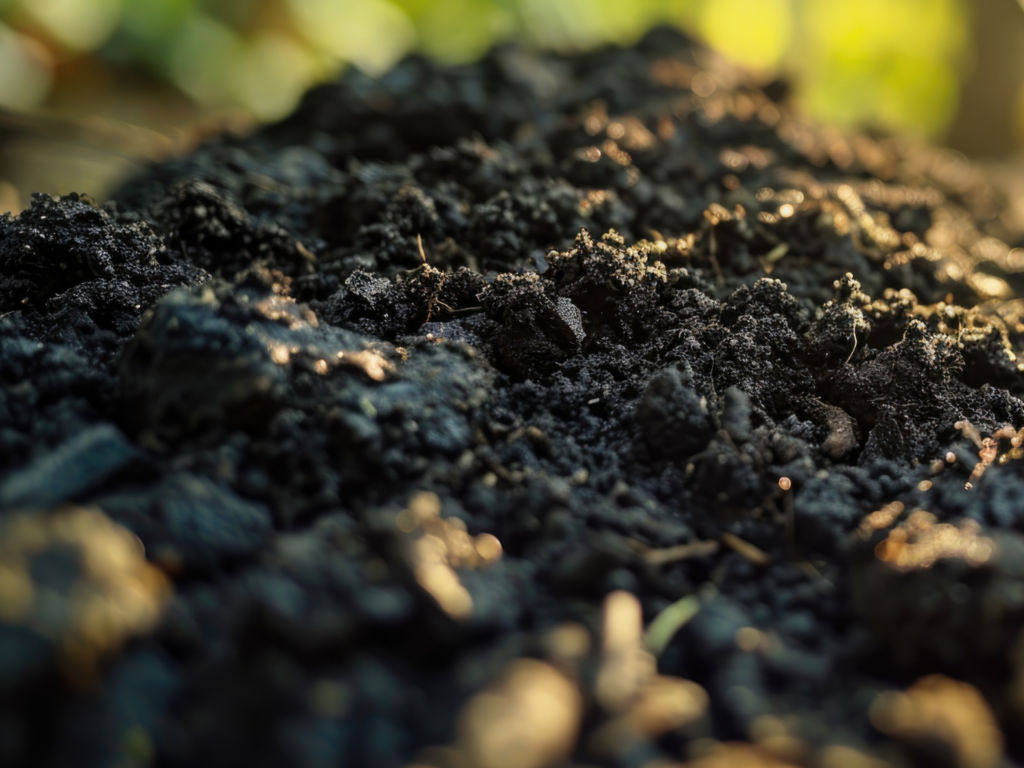 Agriman was founded in 1988 to process and beneficially utilise wastewater sludge. Agriman is currently performing sludge management functions ranging from the operation of dewatering plants to the final blending and marketing of fertilisers in the agricultural sector. This is testament to Agriman’s development of the full value chain for the beneficiation of wastewater sludge as a commercial registered fertiliser product.
Agriman utilises natural processes and accelerated solar drying techniques to process and dry sludge to a 90% solid content in its final product state. The final product is a registered granular organic fertiliser (Act 36/1947), classified as type A1a sludge. Development was done in partnership with commercial farmers and farming equipment manufacturers to ensure that the product is suitable for commercial farming practices and attractive to the market.
Agronomy is trending towards the increased use of carbon rich organic materials to enhance soil health in a precision agricultural practice environment. Biosolids (sewage sludge) is a perfect fit, and with Agriman’s product that complies in both physical and chemical properties, the product is in high demand.
For more information, please contact:
Francois Burger, Agriman
Agriman was founded in 1988 to process and beneficially utilise wastewater sludge. Agriman is currently performing sludge management functions ranging from the operation of dewatering plants to the final blending and marketing of fertilisers in the agricultural sector. This is testament to Agriman’s development of the full value chain for the beneficiation of wastewater sludge as a commercial registered fertiliser product.
Agriman utilises natural processes and accelerated solar drying techniques to process and dry sludge to a 90% solid content in its final product state. The final product is a registered granular organic fertiliser (Act 36/1947), classified as type A1a sludge. Development was done in partnership with commercial farmers and farming equipment manufacturers to ensure that the product is suitable for commercial farming practices and attractive to the market.
Agronomy is trending towards the increased use of carbon rich organic materials to enhance soil health in a precision agricultural practice environment. Biosolids (sewage sludge) is a perfect fit, and with Agriman’s product that complies in both physical and chemical properties, the product is in high demand.
For more information, please contact:
Francois Burger, Agriman

Gina Martin, Communications Leads,
WISA Gauteng Branch


